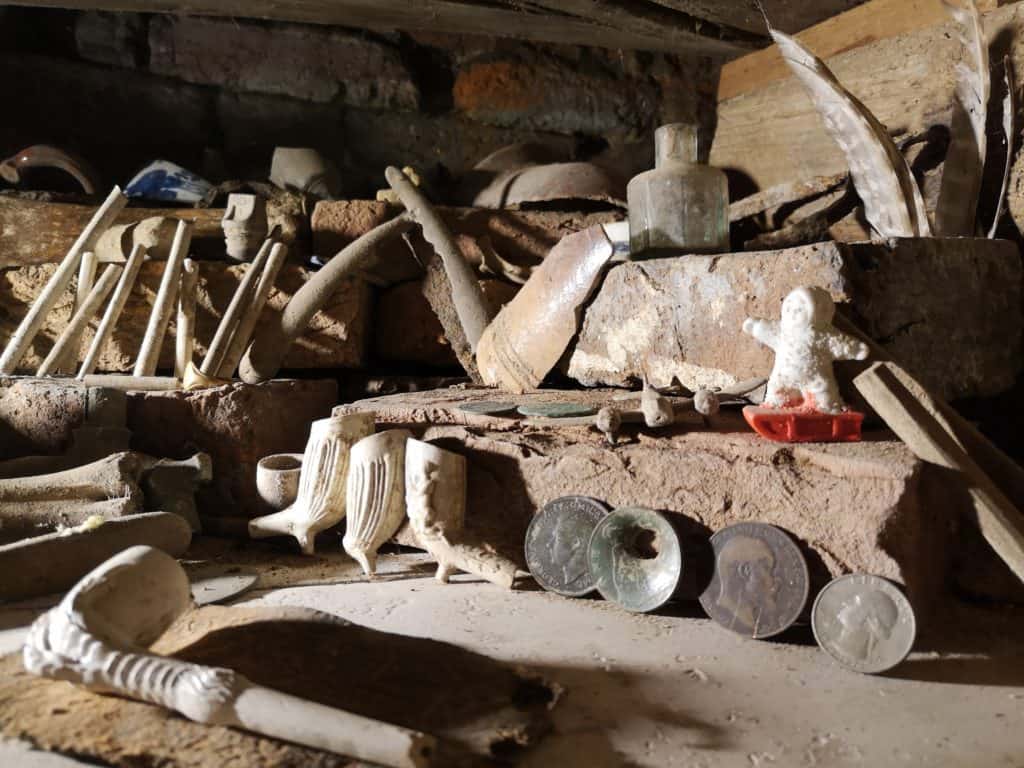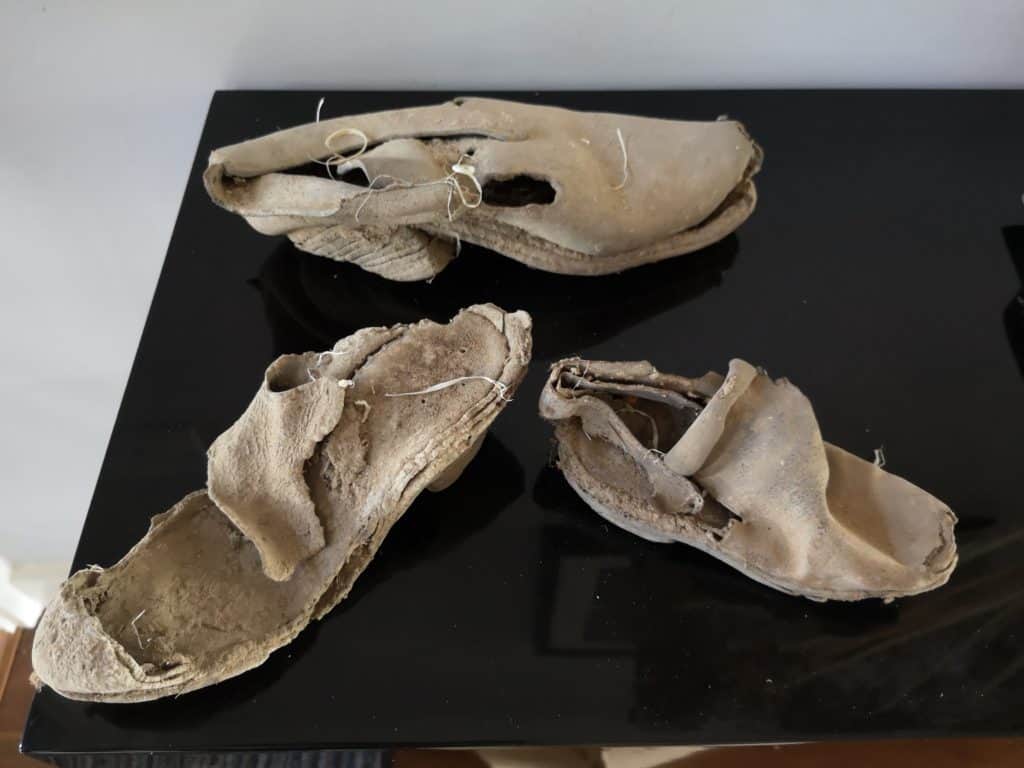Shoemaking in Dorking

The photo shows the kind of shoemaking tools that William Mullins, his father and brother, would have used in Dorking in the early 1600s.
There were two tanneries in Dorking. The techniques that tanners used then to prepare and dye animal skins are still in use today. Leather workers such as saddlers, harness makers and shoe makers measured, cut and stitched everything by hand. The tools they used have not changed much in centuries. Thread for stitching was made by hand from a hemp twine twisted into a very fine point to fit through the eye of a needle. Sewing machines did not come into the trade until many years after Mullins’ time. Today the very best saddlery and shoes are still made by hand.

In the 17th century some shoes were ‘slip-on’ but many had ties of leather or ribbon. Buckled shoes also became popular in the 1600s. Heels were introduced in the 1590s and by the 1600s boots had become popular for men.
Concealed Shoes

In the past shoes and other personal items were often placed in windows, lintels, under floors and up chimneys in order to ward off evil spirits. In the 17th century people believed in the physical reality of the Devil and placed items at vulnerable entrances to their houses to draw spirits away from the human inhabitants. The shoes used were always worn and bore the imprint of their wearer and were perhaps thought to contain the spirit of the wearer which would attract the spirits.

This collection of shoes was found in a chimney in Newdigate. The most complete shoe is an open-sided shoe with a latchet tie and high stacked heels. It might have been worn by a man or a woman and probably dates from the 1640s. The child’s latchet shoe has a low heel and is from the same period. In this period shoes with heels were not made for left and right feet, but were ‘straights’; the shoe was moulded to the shape of the wearer’s foot through use.

This small child’s latchet shoe dates from the mid 1600s. It was found in a house in South Street. It would have been a fashionable and expensive shoe. ‘Latchet’ shoes used strips of leather or ribbons to tie the shoe like a modern lace.
Previously : Collars and Cuffs
Next : Hearth and Home

